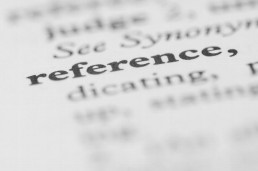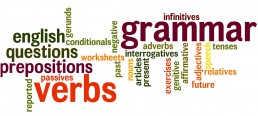Copywriting Package Case Study
At Express Proofreading we specialise in copywriting for businesses of all sizes. Our comprehensive website copywriting service package is designed to provide businesses with all of the content needed for a new website project. This includes us working with the firm to research their target market and industry to provide a truly bespoke and high quality service.
A recent example of our copywriting package in practice is Newlook Windows. Newlook Windows is a manufacturer of uPVC windows and doors. They needed bespoke, engaging, high quality website content for their new site. As a local business based in Manchester, it is essential for them to appeal and attract local customers for this reason we worked closely with them to also ensure that all content was fully search engine friendly.
The process involved conducting a detailed audit of their target market and their brief to create 25 pages of original content for their website.
With each page of content being between 400 – 500 words, all content produced was fully search engine optimised for their 7 chosen keywords. The types of content varied depending on the context of the given page but included; articles, guides, landing page copy, and other forms of content.
When we were instructed by Newlook Windows for the copywriting of their new site the service involved.
- A thorough detailed audit of their new website project.
- Creating a long term content strategy to help them reach their overall target.
- Creating various forms of quality content, whether in the form of articles, guides, landing page copy or other forms of content.
We often work with businesses from a variety of different backgrounds and different industries. As content specialist, we research the industry thoroughly to provide the maximum expertise in that area and to ultimately produce web content that is effective and informative to the reader.
How To Place Your Order
Express Proofreading is a leading copywriting and proofreading service. We provide professional in-house proofreading and editing services to academics and to businesses. We also provide full service copywriting and application review services. Our aim is to provide high quality, professional, reliable content services for all clients.
We pride ourselves on our dynamism and creativity, we will work with you to ensure that you receive the highest quality SEO friendly copy for your website. If you would like to enquire about us working with you to help you produce compelling content for your site contact us today. To discuss your requirements please give us a call. Alternatively you can email us at info@expressproofreading.com.
Harvard Reference Guide
Referencing is the process of citing or documenting the sources of theories, quotes, ideas and diagrams used in writing university assignments. There are several styles of referencing, to mention a few we have APA, Chicago, MLA, Harvard etc.
The Harvard Style of referencing is used to give credit to the authors of the evidence used in writing to support arguments primarily. How the system works, how sources are to be referenced and some other useful information on how the Harvard style of referencing works is given below:
Functions of a Bibliographical Reference
- It admits and gives credit to the work of others for playing a major role in the development of your work.
- It specifies that you have given thought to the appropriate authorities and linked a connection with your work.
- A bibliographical reference should accommodate enough information for both you and third parties to uncover the information source you have used to build up your work.
- It clarifies the fact that you have not used someone else’s idea to develop your work and claim it as your own.
The Elements of the Harvard Referencing System
The Harvard referencing system is comprised of two main components. The first component considered is the In-text referencing. The in-text referencing style is employed when directly quoting or paraphrasing an external source. The external source can be a book, journal, web page etc. The author’s family name and the year of publication of the information source will be entered. If the evidence/fact is culled from a quote, the page number where the fact can be found in the source should be specified.
The reference list which is imprecisely referred to as a Bibliography works simultaneously with the in-text referencing. The reference list contains the full bibliographical details of the book that the evidence/fact was culled. It is alphabetically arranged by the author’s last name and the publication year. The in-text reference details can be looked up in the reference list with other details.
The Harvard Referencing Style is the most commonly used style by University students worldwide. The guidelines stated endorse a version taken from the British Standard.
The Harvard style is the most commonly used style of referencing worldwide. The following guidelines recommend a version taken from the British Standard.
The following can be included:
- A full bibliography – An alphabetically arranged list of all the sources of information consulted for the research.
Or - A reference list – An alphabetical list of all the citations that are present in your work.
There are details below on the information that should be included in your citations. The formatting and layout should be as shown, variation may exist but consistency should be ensured throughout your work:
Books (written by one or more authors)
Obtain the information from the title page and the reverse of the title page:
FAMILY NAME, INITIAL(S). Year. Title. City of publication: Publisher
ADAMS, A. D. 1906. Electric transmission of waterpower. New York: McGraw
Books (edited)
Write (ed) or (eds) after the editor's name(s):
FAMILY NAME, INITIAL(S). (ed). Year. Title. City of publication: Publisher
CRANDELL, K.A. (ed). 1999. The Evolution of HIV. Baltimore: Johns Hopkins Press
Books (electronic)
FAMILY NAME, INITIAL(S). Year. Title. City of publication: Publisher. [Date accessed].
Available from World Wide Web: <URL>
McROBBIE, A. 1998. British fashion design: rag trade or image industry? London:
Routledge. [Accessed 31 May 2006]. Available from World Wide Web:
Journal article
Use the title page of the journal volume or issue and the article:
FAMILY NAME, INITIAL(S). Year. Title of article. Journal title. Volume (issue number), page number of your quotation.
WALKER, J R. 1998. Citing serials: online serial publications and citation systems.
Serials-Librarian, 33 (3/4), pp.343-356.
N.B. Use p. to reference a single page, and pp. if it is a range of pages.
Commonly Confused Words & How To Avoid Them?
Commonly Confused Words & How To Avoid Them?
The importance of good grammar cannot be underestimated, the correct use of grammar is key in all forms of writing and ensures that you make a positive impression upon the reader. There are many words in the English language that often lead to confusion as to the correct word choice. Highlighted below are some such examples of words that often get people confused, with this helpful guide the differences are clarified.
Your/You’re
This use of abbreviations is frequently misspelt. The word “your” represents that something belongs to you and it always sits in front of a noun. The apostrophised “you’re” is always abbreviated from you are.
Advice/Advise
Advice is an opinion offered or recommended to someone, while Advise on the other hand, is said to be an act of offering someone an advice or opinion. So for example, if you need to use the word in a sentence, you say I advise you to give the students advice about their chosen careers.
Its/It’s
People tend to use these two words incorrectly. Please note that “It’s” is simply a contraction for “it is.” Its is a possessive pronoun. For example, it’s never too late.
Compliment/Complement
A compliment is something nice you say to someone, most especially when they have done something good. A complement is something that goes well with something else, as in this sentence: The diligence of workers and faithfulness of the boss of Express Limited complement each other to produce greater heights for the company.
Continuous/Continual
You can agree with me that both words mean for a certain duration, but continuous involves an uninterrupted amount of time. Continual means it happens on and off and with interruptions. For example, the continuous wave of the sea scares her a lot, but not as much as a continual bark of a dog.
Then/Than
The word “Than” is a conjunction used to make comparisons. She is taller than me. He is meaner than her. Then is an adverb used to situate actions in time. He ate, then went to bed. The baby screamed, then threw the rattle.
Lie/Lay
Lie means to recline or rest on a surface, but lay means to put something somewhere. She wanted to lie on the floor after I told her to lay her coat on the counter.
There/They’re/Their
There is a noun telling you of a point or place. They’re is simply a contraction for “they are.” Their is the possessive form of “they.” For example, where are they? They are over there! They’re playing football.
To/Too/Two
No one needs to be told that the word to is a preposition, too means also, two means a number. The trio should not be mistaken for each other, most especially when used in the construction a sentence. For example, Two people went to the shop, too.
Obtain an Instant Quote for Our Proofreading Service
If you would like to have your writing professionally proofread by our team of editors then simply upload your document for an instant quote. To obtain an instant quote for our proofreading service, visit the Instant Quote page, select the service that you require, followed by the turnaround time, then complete your order details and upload your document.
The Basics of Good Proofreading
What is Proofreading?
Proofreading can be said to be checking a written text for typographical errors and mistakes in spelling, grammar and style.
• Before You Proofread
It is important to proofread at the right point. Your written document must be well organised, well developed, with the formatting and paragraph placement complete. After this has been done, then you can look at making corrections where necessary - either in a particular sentence or clause. Be sure however, that you have finished revising the larger aspects of your text prior to this.
It requires some sort of a distance to really see mistakes. Always take time (maybe some minutes, a day, a week depending on the type of text) to take note of your writing and proofread. If there are words that are not important in a sentence, remove them before going on a search for mistakes.
Highlighted below are ten useful proofreading techniques:
- Knowing what is meant to be or what not to be in a text is highly important, from knowing what punctuation mark to use with the use of good grammar. Unless you know what is correct, you will be in no position to spot mistakes.
- Proofreading requires zero disturbances or distractions. Always make sure you proofread in a serene environment while also avoiding any form of distractions.
- Proofreading can also be accurately done when the text is read aloud. This is always useful in spotting faulty sentence construction and identifying grammatical errors.
- Take your time. Patience is a virtue, always set for yourself a fixed time, take a break and start again until it is finished.
- You need to take note of all irregularities in the styles and formatting of the text. Watch out for where the punctuations were wrongly used or where the heading has changed size compared to the previous ones and so on.
- Make it one line at a time. You should always be methodical in proofreading. A ruler won’t be a bad idea in guiding eyes from not missing the odd line.
- Make it one word at a time. People normally won’t pay attention to the use of every word in a sentence, but accurate proofing requires having to know and understand one word at a time. It is another unique reading technique that requires patience too.
- Finishing and proofing your writing needs to be balanced with time. You will notice more errors if you take a break and come back to it.
- Proofreading is not always effective when it is on screen only. You should also consider printing out your document to proofread it directly from the printed copy.
- A final proofread of the hard copy is always required after every finished job.
Obtain an Instant Quote for our Proofreading Service
At Express Proofreading we offer a professional proofreading service for students, academics and businesses. We are able to ensure that your written content is not only free from spelling mistakes and grammatical errors but we also check syntax and sentence structure.
A guide to proofreading and editing for self-publishers
Editing a book is a necessary and unknown process for many writers. Every book must be edited and proofread. For that to happen the book should be maximised and along the way, the author must evolve and learn from the process. A good edition should contemplate and achieve these three objectives.
How do you edit a book correctly? To edit a book is to subject it to a thorough correction. To evaluate if the author has managed to capture the idea that was in his head in the book that they have written. If self-publishing, then this definition can still be applied to both novels and essays. The editing process is different in each case, but it is always necessary.
• Different types of editing
If you ask yourself how to edit a book correctly, you should know that it is not the same for all works. In an essay this process must make sure that the work is informative, that is to say that it has an easy-to-understand language and a coherent structure. However complicated the subject may be, it must be structured in such a way that the reader gradually enters into the subject in a logical way. The editor will be responsible in these cases to verify that the work has a good structure, that everything fits and that every part of the material develops organically.
In the novel, of course, the beginning of the book is very important, since it will be the trigger that causes the reader to continue reading. However, it is also important to choose the narrative techniques and the structure according to the story. In this case, talking about one or the other is very complicated since there are thousands of ways to present a story.
The main elements to focus a work review on are: narrators, characters, secondary characters, plot, subplots, space and time, pitch, rhythm, beginning, ending, how the structure is built and if it fits the story. These are just some of the endless list of details that make a novel strong.
Editing a book, in short, is to address how it has been written and improve it to its ultimate consequences.
• Proofreading Tips for Self-Publishers
You may already know what the 20,000 word test is, though it never hurts to remember it. Once that figure is reached, it is advisable to rest one day and read everything you have written. With 20,000 words, you can get an idea of where the novel will go, but you will also know if you like the characters that have appeared, if the plot is well routed, etc. If you have to make some corrections in relation to the characters, the tone, the script, etc., this is the best time for it.
After making the necessary corrections, it is time to finish the first draft. Once finished, read it. The best thing is to pass it to a format in which you cannot make modifications while reading, which will speed up the correction time. Let a day or two go by and look at the second draft again. Many people make the mistake of delivering the draft to relatives or friends who may be passionate about reading. However, they are biased and so it is best to get objective opinions by asking more neutral reviewers.
Look for more than one opinion, although don’t resort to too many correctors, as it can overkill and just confuse you. Another option is to resort to groups of critics, who know the genre of which you write. Their advice can be very helpful. And of course, the most important thing is for you to know what your idea is - to capture it and to be assured on what your style is like.
Finally, the most important thing is that you are in agreement with all the changes and that these adapt like a glove to the mental image that you had of your work.
Obtain an Instant Quote for Our Proofreading Service
To obtain an instant quote for our book proofreading services, visit the Instant Quote page, select basic proofreading as the service and upload your document and our Quote Generator will calculate an instant quote based upon the word count of your document. Once you are happy with your quote, you can then proceed to our secure checkout page and place your order.
Tips For Proofreading Website Content
Each page has a goal
Every website has a main objective, whether to get a visitor to fill out the contact form, to subscribe to a newsletter, to buy a product or to download a file. Within this context, each page of the site has its own objective, which should finally lead to achieving the main objective. When writing or reviewing a text, it is important to be clear from the beginning what the purpose of each page is. This way you can identify and correct each time the focus is lost and the message begins to lose traction.
Make sure that the content is direct and always focused on the purpose of each particular page.
The personality of the brand
Every brand is like a person, that is, it has its own personality and is identified with certain values. When you are writing or reviewing a text, make sure that the tone and way of communicating represent these characteristics of the brand.
For example, if you are reviewing the contents for a website of a major law firm that is very traditional and elegant, you will not want the message delivered in an informal or colloquial way. Probably the most appropriate, according to the brand, would be to use serious and formal language.
However, if the content is for a brand of jeans aimed at the adolescent public, surely the most appropriate would be to use a direct, close and informal language.
The points of mistrust
Usually what keeps visitors from taking the action that we expect them to do is simply a lack of trust with the brand or the site and, in most cases, this simply comes from a lack of information.
Let's assume for a moment that the site you're proofreading/editing is getting subscribers to the newsletter. There are several questions that the visitor may have and that can cause distrust.
Some could be:
• What will I get when I subscribe?
• In this newsletter do you talk about topic X?
• Will they send me SPAM?
• How difficult will it be to unsubscribe if I do not like the newsletter?
• Are there people who already receive this newsletter? Has it been beneficial for them?
When reviewing or writing the content of a site, try to put yourself in the shoes of the visitor and answer all the questions, and show that the brand and the site are trustworthy.
If you already have previous contact with site visitors, the best thing you can do is to simply ask them.
Try to tell stories
There is nothing more boring than entering a website and seeing texts that only describe a company in a flat and linear tone.
People retain much better information when we are told as stories, especially if it is well narrated and has a climax, moments of tension and moments of tranquillity. When a story catches you, there's no way you'll forget it.
If possible, try to include stories in your texts, they are much easier to digest and easier to remember.
Stay away from the cliché phrases
If you use cliché phrases on your website or your clients' website, people will probably think that it is a cliché company. Furthermore, they may believe that you don’t know what you do very well, since you cannot explain it in any other way than using pre-made and formulaic phrases.
Spelling and writing
The last thing on the list, but probably most importantly, is that there are to be no writing or spelling mistakes. Make sure you do not miss accents, that there are not many repeated words, that you have not changed a "V" for a "B", etc. Luckily most writing applications have spell checkers, so that's a great help, but do not just rely on the software, if you have someone who can read your texts and give you a second opinion, then this will always be beneficial.
Obtain an Instant Quote for our Proofreading Service
At Express Proofreading we offer a professional proofreading service for businesses. We are able to ensure that your company material or documents are not only free from spelling mistakes and grammatical errors but we also check syntax and sentence structure.
Proofreading A Legal Document
How to Proofread a Legal Document
Proofreading a legal document thoroughly is key when drafting legal contracts and agreements, as even the smallest of errors or omissions can have significant consequences. One of the first things to make sure in any legal document is that it is easy to read and has a natural flow and clear layout. Also it is better to proofread from a hard copy than from a computer screen. If the fonts are too small, then take the time to enlarge them so it’s easier to read.
• Consistency
Be sure that your legal document is consistent. We know that different businesses have different in-house writing styles with regards to the layout, font type, size, paragraphing and the choice of words to capitalise. For instance, some prefer words like ‘Claimant’ or ‘Defendant’ to begin with a capital letter; some others may prefer certain words or phrases to either be in bold or italics.
There isn’t actually any approved grammatical reason why this is so; it is just a style that different people adopt. Make sure you stick to your business’s style of writing throughout the document. Not being consistent is likely to happen when there are several people working on a particular document who may end up adopting different writing styles. As a result, when the whole document is finally brought together as one, the inconsistencies can be spotted easily. This does not leave a good impression in the mind of the reader.
• Easy Omissions
(a) Ensure to check for formatting errors, e.g., the margin may not be properly aligned or a tab may be in the wrong place.
(b) Always make sure that your typing goes back to normal after using the bold or italic function for a few words or sentences.
(c) Ensure that the numbering is in the right order and that they are in sync with the relevant text. Footnotes and endnotes should also be properly numbered so that they are in line with what they refer to in the main body of the text.
(d) Once you open brackets or inverted commas, ensure that they are closed afterwards.
(e) Look out for casting and rounding up errors as regards to figures. Names, dates and addresses should be correctly written too. Whenever you are typing numbers with plenty of zeros, ensure that you are typing the right number.
(f) Make sure that there are no large gaps at the end of your pages and that there are no headings at the bottom without any texts underneath.
• Confusing Words
There are some words that sound and look alike but have different meanings e.g. principal/principle; affect/effect, practise/pracitce. Ensure to pick the right one.
Whenever you are proofreading a legal document, try to always have a dictionary beside you. There are also some good online dictionaries that you may find useful. Always ask questions when in doubt – it is better to cross check your document properly before sending it out so that it does not end up having avoidable mistakes.
Obtain an Instant Quote for our Proofreading Service
At Express Proofreading we offer a professional legal proofreading service. We are able to ensure that your legal documents are not only free from spelling mistakes and grammatical errors but we also check syntax and sentence structure.
To obtain an instant quote for us to proofread your documents, click the Instant Quote button below, select the service that you require followed by the turnaround time and upload your document and our Quote Generator will calculate an instant quote based upon the word count of your document. Once you are happy with your quote, you can then proceed to our secure checkout page.
Content Trends To Look Out For In 2017
5 Key Content Trends
Well crafted, informative content is key for online businesses in helping them to engage and communicate with their customers. There are five content trends that we believe will be particularly relevant for 2017:
- Growth in Live streaming: Live streaming of videos to push content out will grow in popularity in the current year. Social Media platforms like; YouTube Live, Facebook Live and Snap Chat provide easy-to-use features that enable live product/service briefings, product launch, tours, tutorials, events and more.
- Virtual reality takes off. Companies have already started using VR technology to promote premium products. Companies like, North Face (outdoor clothing company) has already applied the technology to showcase their products and athletes. This tool can be a very powerful but expensive way to promote the content of one’s products and services. While this trend might be beyond the reach of small and medium company’s at least for the current year, we’re convinced that once the technology is cheaper, it will grow rapidly and become very popular.
- More newsletters. The use of email newsletters to reach out to and share information with existing customers and prospective clients is very prevalent amongst B2B marketers. If you are considering email newsletters or a different type, 2017 is probably the time to launch into that platform. This is because studies are beginning to show that email opening rates are actually increasing. We guess that lots of people’s ideas in the past five years about the death of emails was a little premature.
- Storytelling and content marketing. Good storytelling in business will most likely grow beyond just being a case study, but will become a key part of content marketing. This is evidence that most consumers are beginning to wear out from the idea of product content just for content's sake. Just blogging or updating other social media platforms just for the sake of it won't do it any longer. Your audience needs to be more engaged and this might require you telling a story.
- Push advertising against native advertising: A general dislike for online advertising coupled with the use of Ad blockers are making it more difficult to get to consumers with banners, pop-ups, pop-under and paid ads. Even though this trend has been around for some time now, we would still dub 2017 as the year for ad blockers. This is the year that consumers will finally say enough is enough and will then take matters into their own hands. Don’t get us wrong though, we don’t think advertising and ads are going anywhere, they will just evolve into something different.
The usual ways used to share content and information is not just going to disappear. We will still depend on the use of our emails, videos, blog posts and downloadable reports to share content.
It would be a smart choice to keep all of these trends in mind while strategizing on your content marketing plan for the current year and even beyond: As regards to social media, a coherent reach is proving to be more and more difficult to achieve. For instance, Facebook changed some of its rules which has made content visibility more difficult. To get high visibility now, you will need to pull out your wallet. However, this is not entirely true if you are just trying to reach out to a small audience. But if you want to go big, then it’s going to cost you more money, more advertising and better online marketing.
There is a surge in demand for interactive content. White papers and case studies will still be treasured in many markets but content marketers should begin to develop interactive quizzes or presentations that can get a web visitor's attention.






